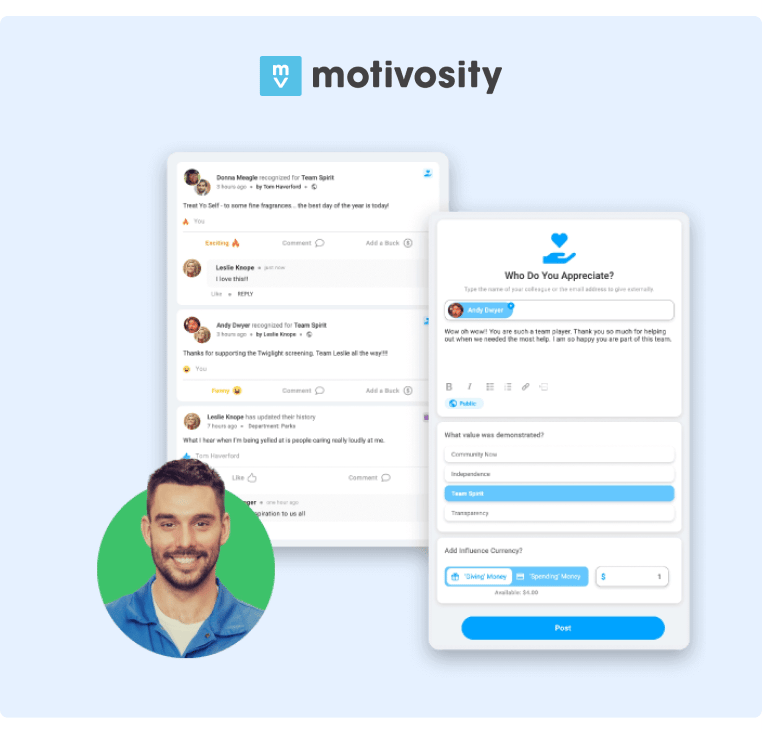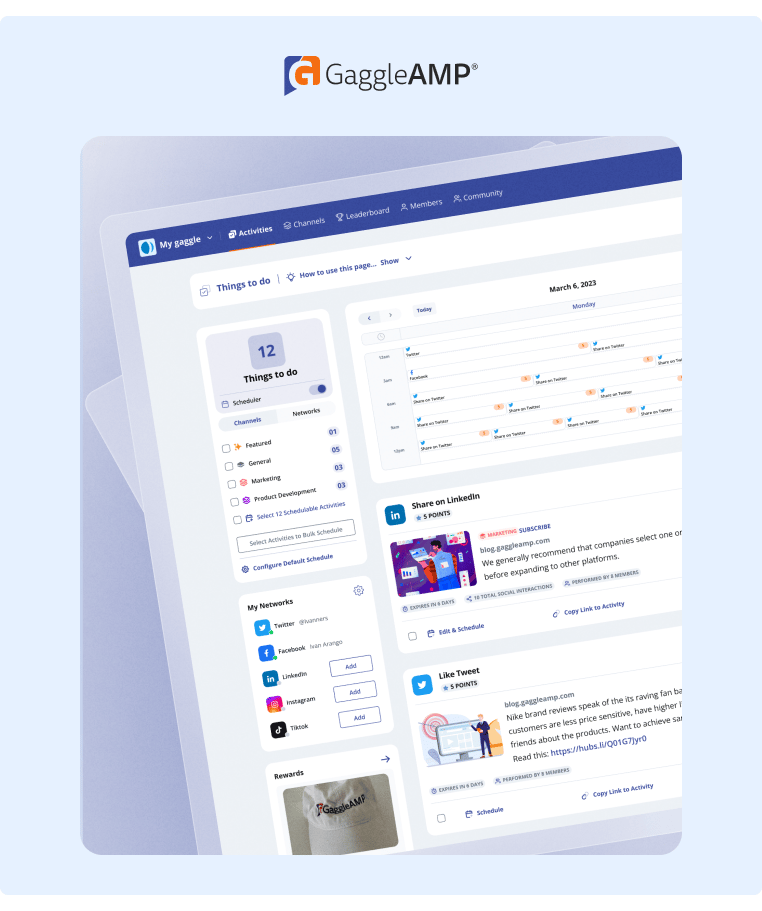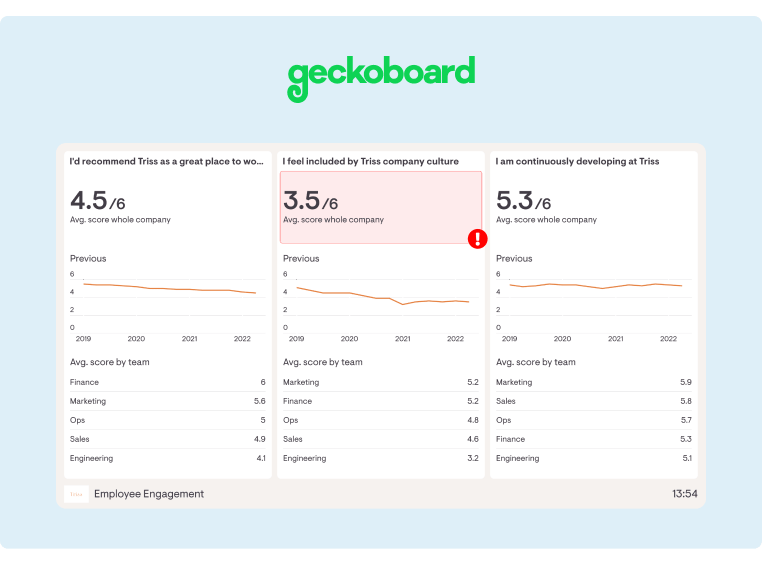Enhancing Employee Engagement: Exploring Solutions and Strategies
Employee engagement is an often-overlooked but significant factor that can make or break a company’s success.
Engaged employees are invested in their work, passionate about contributing, and committed to achieving company goals. A motivated workforce means increased employee satisfaction, higher retention rates, improved productivity, and ultimately, a better bottom line.
Employee engagement goes way beyond job satisfaction. It signifies a deeper connection that employees feel with their responsibilities, colleagues, and the company. Engaged employees are driven by a sense of purpose, meaning, and belonging. This fuels their motivation and commitment to deliver their best.
In this article, we’ll discuss employee engagement solutions and strategies, exploring platforms, tools, and surveys that contribute to creating an engaged workforce. Let’s find out how companies can foster a culture of engagement and drive long-term success.
What Are the Benefits of Employee Engagement Platforms?
Employee engagement platforms are centralized hubs that enable effective communication, collaboration, and recognition within companies. They are digital spaces that help employees connect, share ideas, and participate in advocacy initiatives.
These platforms offer numerous benefits, including:
- Improved Internal Communication. Communicate through a centralized hub for real-time connectivity, information sharing, and collaboration across departments.
- Enhanced Workforce Participation. Encourage employees to be actively involved, contribute ideas, provide feedback, and foster innovation and continuous improvement.
- Streamlined Recognition Processes. Create a culture of appreciation by boosting morale, encouraging healthy competition, and reinforcing an employee’s sense of value and belonging.
- Unique Gamification Elements. Add an element of fun and motivation for employees as they engage with their peers, complete tasks, and contribute to the company’s goals.
Prominent employee engagement platforms such as GaggleAMP and Slack have gained popularity for their features and user-friendly interfaces. These platforms empower employees to actively participate, share company content, and contribute to a positive work culture.
What Are Employee Engagement Tools and How Can You Use Them?
Employee engagement measurement tools (15five, Motivosity, TINYpulse, Officevibe, Qualtrics) provide businesses with the means to measure, analyze, and enhance employee engagement levels. They help with collecting feedback, conducting surveys, and tracking key engagement metrics to identify areas of improvement.
Some employee engagement tools also offer additional features like recognition and rewards programs, peer-to-peer recognition, and employee feedback platforms. These features enable businesses to celebrate individual and team achievements, acknowledge exceptional contributions, and promote a positive and inclusive work environment.
So, how can you use them to strengthen your employee engagement? Let’s take a look at how sentiment analysis, performance management systems, and surveys work.
1. Sentiment Analysis

Source: InMoment
This type of analysis offers insights into worker satisfaction levels and identifies in-house systems and processes that can be improved. It leverages advanced algorithms to analyze text responses and extract meaningful patterns and themes, providing deeper insights into employee perceptions.
2. Performance Management Systems
These systems track employee performance and offer suggestions to improve productivity. They are integral to employee engagement tools and offer a structured approach to goal-setting, performance tracking, and continuous feedback.
3. Surveys
Surveys are used as a feedback-collecting mechanism, They help businesses gather regular employee feedback on various aspects of their work experience. Let’s take a look at the different types of surveys.
If you’re looking for the best employee engagement software for surveys, Lattice employee engagement software offers employee, pulse, and NPS surveys to gauge general employee sentiment.
Now let’s take a look at the different types of employee engagement surveys.
What Are the Different Types of Employee Engagement Surveys?
Surveys help companies understand employee perceptions, identify areas of strength and improvement, and track engagement levels over time. Employee engagement surveys give employees a voice and offer insights that guide brand strategies and initiatives.
Here are four types of employee engagement surveys:
1. Annual Engagement Surveys
They are conducted annually to measure overall employee engagement levels, assess satisfaction, and identify areas of improvement. They provide a comprehensive view of the company’s workforce sentiment and establish a baseline for future initiatives.
2. Pulse Surveys

Pulse surveys are short and frequent surveys conducted at regular intervals (weekly, monthly, or quarterly) to capture real-time feedback on specific topics or initiatives. They often consist of just one or two short questions. They enable companies to gauge employee sentiment and address emerging issues.
3. Onboarding and Exit Surveys
Onboarding surveys are administered as part of the hiring process to gather feedback on a candidate’s experience, identify areas for improvement, and ensure a smooth integration into the workplace. Exit surveys are conducted when an employee leaves the company. This informs retention strategies.
4. Culture and Climate Surveys
These surveys assess a company’s work culture, values, and working environment. They provide insights into employee perceptions, feelings of inclusivity, diversity, and overall satisfaction. They help organizations understand the cultural aspects that impact employee engagement and identify opportunities for improvement.
To ensure the effectiveness of employee surveys, businesses should focus on survey design, confidentiality, clear communication of survey objectives, actionable feedback, and follow-up actions. Implementing such best practices allows companies to obtain relevant data and drive meaningful change.
What Are Employee Recognition Programs?
Some employee engagement tools also offer employee recognition programs, which fosters a culture of appreciation, boost morale, and reinforce positive behaviors. Recognition programs acknowledge and celebrate employee achievements and contribute to increased job satisfaction and engagement.

Source: Motivosity
Recognition programs can take various forms such as peer-to-peer recognition, manager recognition, spot rewards, and formal award programs. Brands can customize recognition initiatives to align with company values and promote a positive work environment.
Leading companies like GE, Zappos, and Apple have implemented innovative employee recognition programs that have positively impacted employee engagement. These brands have cultivated highly engaged and motivated teams by creating a culture of recognition and appreciation.
How Can You Implement Employee Development and Training?
Initiatives undertaken to develop and train employees foster professional growth and skill development. Employees are more likely to be engaged, motivated, and committed to their responsibilities when they feel supported in their career aspirations.
Employee development and training initiatives can take several forms, such as mentorship programs, leadership development workshops, skill-building courses, and career advancement opportunities. These initiatives empower employees to enhance their skills, pursue their career goals, and contribute meaningfully to the company.
Companies like LinkedIn, Salesforce, and Microsoft have implemented robust employee development programs that have yielded significant gains in engagement and productivity. These companies have created an environment where employees thrive and feel valued through tailored training and growth opportunities.
How Can You Drive Employee Engagement Through Advocacy?
Employee advocacy programs encourage active employee participation, boost morale, and enhance employee engagement. Engaged employees become brand advocates, amplifying the brand's message and strengthening its reputation.
GaggleAMP is a leading employee advocacy platform that enables companies to amplify their engagement efforts through employee advocacy. It provides a centralized platform for employees to share company content on their social media channels, participate in advocacy campaigns, and contribute to a positive brand image.

The platform empowers employees by providing them with relevant and timely content to share, fostering a sense of participation and strengthening their ties to the company. Leveraging GaggleAMP can help companies tap into the power of employee advocacy to enhance engagement and expand their reach.
What Are Some Other Employee Engagement Solutions?
Looking for more ways to further strengthen employee engagement in your company? Consider these six additional employee engagement solution tips:
1. Flexible Work Arrangements
Offering flexible work arrangements such as remote work, flextime, or compressed workweeks can contribute to employee engagement by promoting work-life balance and accommodating individual needs.
2. Employee Wellness Initiatives
Investing in employee wellness programs such as fitness challenges, mindfulness workshops, and mental health support demonstrates a company’s commitment to the well-being of its employees. This results in improved engagement and overall job satisfaction.
3. Transparent Communication Channels
Establishing transparent communication channels such as town hall meetings, feedback forums, and open-door policies fosters trust, promotes transparency, and makes employees feel heard and valued.
4. Leadership and Management Support
Strong leadership and supportive management play a crucial role in employee engagement. When leaders effectively communicate expectations, provide regular feedback, and recognize employee contributions, they create an environment conducive to engagement and growth.
5. Employee Involvement and Empowerment
Encouraging employee involvement through initiatives such as cross-functional projects, employee-led committees, or suggestion programs fosters a sense of ownership. It enables employees to contribute to decision-making processes and ultimately drive engagement.
6. Diversity and Inclusion Initiatives
Creating a diverse and inclusive workplace where employees feel respected, valued, and represented enhances engagement and cultivates a culture of belonging. Companies can implement diversity and inclusion programs and foster an inclusive environment that celebrates individual differences.
Selecting the Right Employee Engagement Solutions
Now that you know what employee engagement solutions are available, it’s time to pick the right one for your company. To ensure the solution aligns with the company’s needs and goals, consider these factors:
Customization and Flexibility
Look for solutions that can be tailored to meet your brand’s specific requirements. Customization options allow for the alignment of the solution with your unique company culture and engagement objectives. Additionally, flexibility in terms of scalability and adaptability ensures that the solution can grow and evolve with your brand.
User-Friendly Interface
The chosen solutions should have an intuitive and user-friendly interface that is easy to navigate and understand. This promotes ease of use and encourages employee adoption and engagement.
Data Analytics and Reporting

Source: Geckoboard
Robust data analytics and reporting capabilities are essential to gaining valuable insights into employee engagement trends and identifying areas of improvement. Look for solutions that offer comprehensive analytics dashboards, real-time reporting, and customizable metrics to track progress and measure the effectiveness of your engagement initiatives.
Integration Capabilities
Compatibility and integration with existing systems and processes are crucial for a seamless employee engagement experience. Ensure the chosen solutions integrate with your human resource information system, communication tools, performance management systems, and other relevant platforms.
Mobile Accessibility
Look for solutions that offer mobile applications or responsive design to ensure that employees can easily access and engage with the platform anytime, anywhere, and from any device.
Vendor Support and Resources
Consider the level of vendor support and available resources. A responsive vendor that offers training, ongoing support, and updates will contribute to the successful implementation and adoption of the chosen solutions.
Ready to Unlock the Potential of Your Workforce With Employee Engagement Solutions?
Employee engagement is a vital component of a thriving and high-performing company. Leveraging the right employee engagement solution is fundamental for companies to cultivate a productivity, collaboration, and satisfaction culture.
GaggleAMP is a solution that elevates your employee engagement efforts and helps you unlock the full potential of your workforce.
Request a demo of GaggleAMP to witness firsthand how employee engagement solutions, combined with the power of employee advocacy, can revolutionize your company’s culture.








